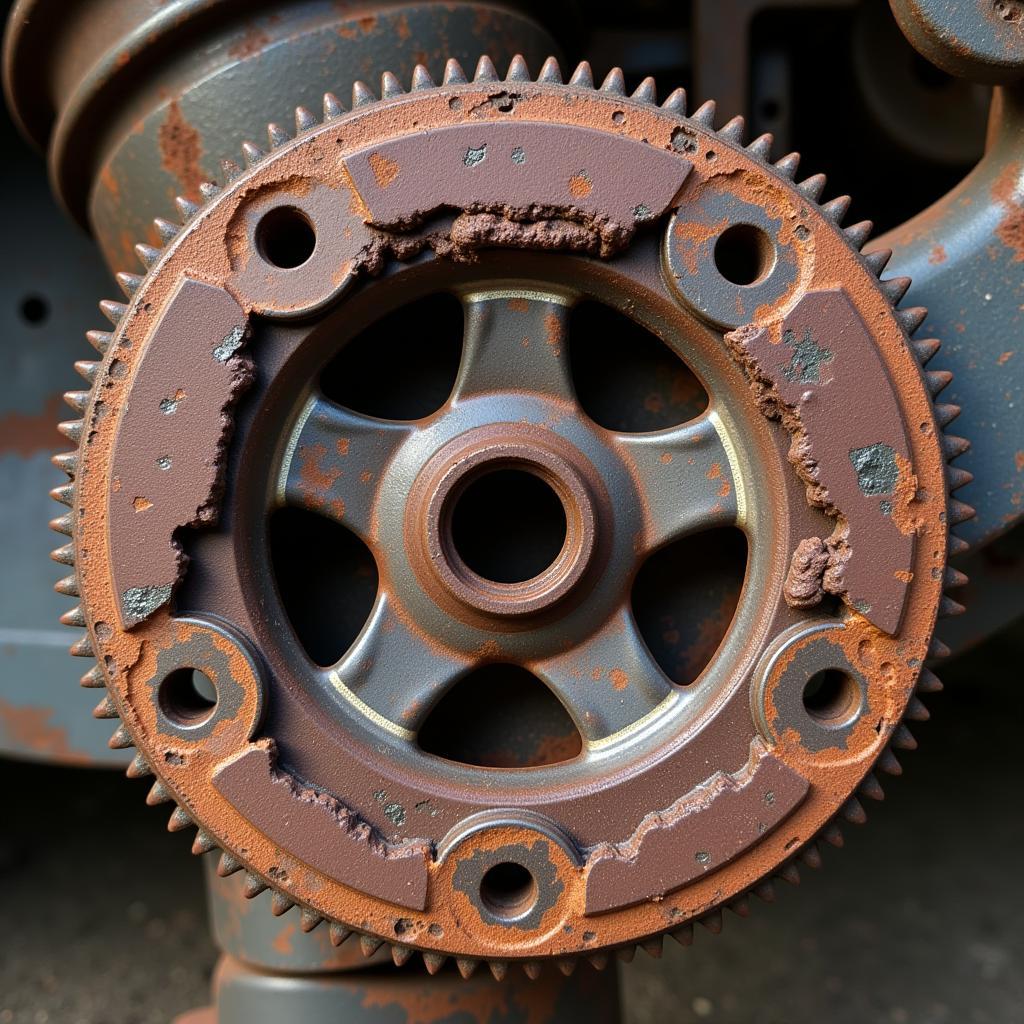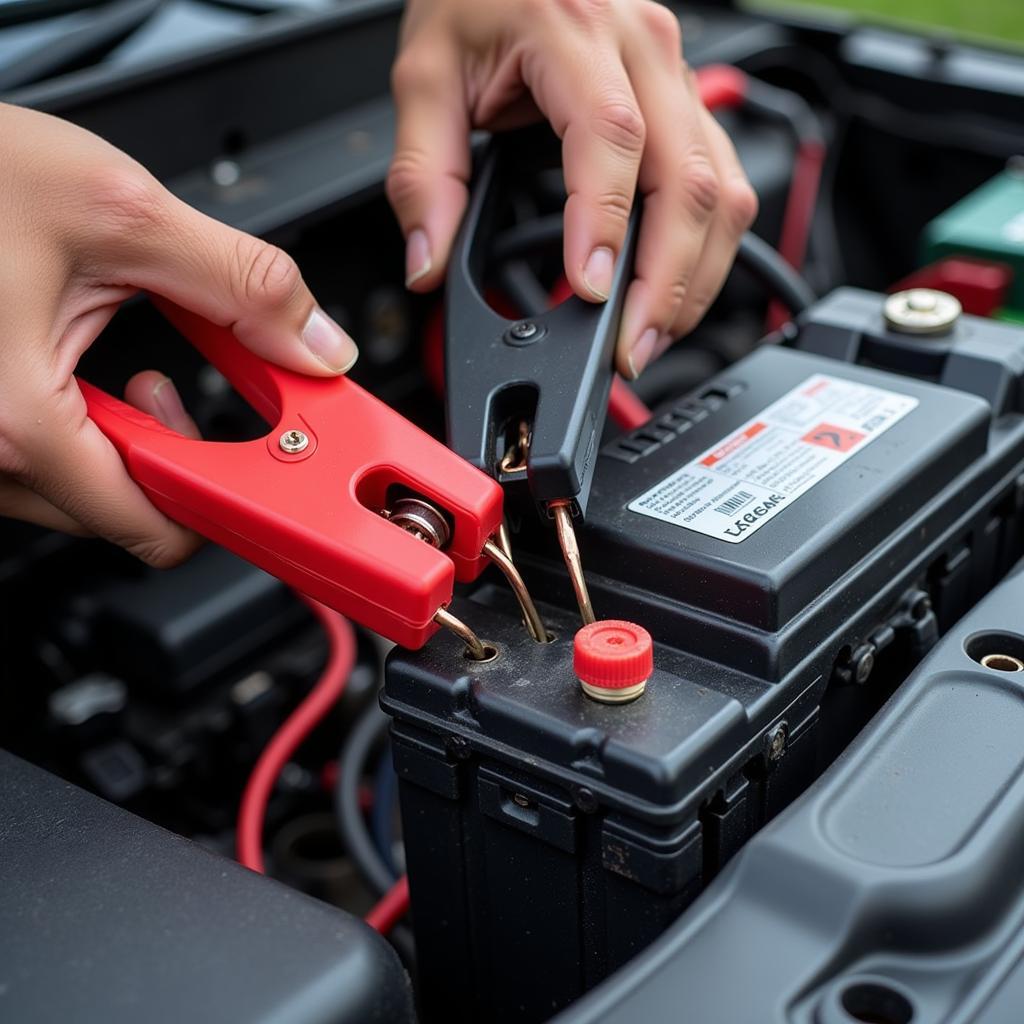The dreaded honda crv brake warning light can be a source of anxiety for any CRV owner. Understanding what triggers this warning light and how to address it is crucial for maintaining your vehicle’s safety and performance. This comprehensive guide will delve into the common causes, diagnostic procedures, and solutions for the honda crv brake warning light, empowering you to take control and get back on the road with confidence.
Understanding Your Honda CRV’s Brake Warning Light
The brake warning light is part of your CRV’s complex safety system. It’s designed to alert you to potential issues within the braking system. While it can sometimes be a simple fix, ignoring it can lead to more serious and costly repairs. Don’t underestimate the importance of this small but vital warning. 2008 honda crv brake warning light owners might find this particularly relevant.
What Does the Brake Warning Light Indicate?
The brake warning light can illuminate for several reasons, ranging from low brake fluid to more serious issues like a malfunctioning ABS system. Understanding these potential causes is the first step to resolving the issue.
- Low Brake Fluid: This is the most common culprit. As brake pads wear down, the brake fluid level drops. Regularly checking and topping off your brake fluid is crucial.
- Parking Brake Engaged: Sometimes, the simplest explanation is the correct one. Ensure your parking brake is fully disengaged.
- Faulty Brake Light Switch: This switch signals the brake lights to illuminate when you press the brake pedal. A malfunction can trigger the warning light.
- ABS Issues: A problem with the Anti-lock Braking System (ABS), such as a faulty sensor or module, can illuminate the brake warning light.
- Worn Brake Pads: While low brake fluid is often the first indicator, severely worn brake pads can also trigger the light.
Diagnosing the Problem: A Step-by-Step Guide
Before rushing to a mechanic, you can perform some basic checks yourself. These can help narrow down the cause and potentially save you money. honda crv brake warning light stays on offers further insights into persistent warning lights.
- Check the Parking Brake: Make sure it’s fully released.
- Inspect Brake Fluid Level: Locate the brake fluid reservoir and check the fluid level. If low, top it off with the correct type of brake fluid. 2000 honda crv brake warning light models may have specific fluid requirements.
- Check Brake Lights: Have someone press the brake pedal while you observe the brake lights. If they’re not working, the brake light switch might be faulty.
“Regular maintenance is key to preventing many brake-related issues,” advises John Smith, a certified automotive technician with over 20 years of experience. “Simple checks like monitoring your brake fluid level can save you a lot of hassle down the road.”
When to Seek Professional Help
If you’ve performed the basic checks and the honda crv brake warning light persists, it’s time to consult a qualified mechanic. Issues with the ABS system or other complex components require specialized diagnostic equipment and expertise. Don’t delay, as ignoring the problem can compromise your safety. 2012 honda crv brake warning light provides information specific to this model year. 2006 honda crv brake warning light owners can also find helpful information here.
Conclusion
Addressing the honda crv brake warning light promptly is essential for your safety and the longevity of your vehicle. By understanding the potential causes and following the diagnostic steps outlined above, you can take the first steps towards resolving the issue. However, remember that seeking professional help is crucial for more complex problems.
“Addressing brake issues early can prevent more extensive and costly repairs later on,” says Sarah Jones, an automotive safety expert. “Don’t ignore warning signs, especially when it comes to your brakes.”
FAQ
-
What is the most common reason for the honda crv brake warning light? Low brake fluid is often the primary cause.
-
Can I drive my CRV with the brake warning light on? While possible, it’s strongly discouraged. It could indicate a serious safety issue.
-
How often should I check my brake fluid level? Checking your brake fluid monthly is a good practice.
-
How expensive is it to fix a brake warning light issue? The cost varies depending on the underlying cause, ranging from a simple top-up of brake fluid to more costly repairs like replacing brake pads or components of the ABS system.
-
Is the brake warning light the same as the ABS light? No, they are separate warning lights, although a problem with the ABS can sometimes trigger the brake warning light.
-
Can worn brake pads cause the brake warning light to come on? Yes, worn brake pads can lead to low brake fluid and trigger the warning light.
-
Where can I find information specific to my Honda CRV model year? Refer to your owner’s manual or consult a qualified mechanic for model-specific information.


